Meet Chataigne
Artist-friendly Modular Machine for Art and Technology
Chataigne what ?
Philosophy
Chataigne is a free, open-source software made with one goal in mind : create a common tool for artists, technicians and developers who wish to use technology and synchronize software for shows, interactive installations or prototyping.
It aims to be as simple as possible for basic interactions, but can be easily extended to create complex interactions.
Chataigne is under the GPL3 license, you can find the sources on github.
Okay, but what does it do exactly ?
While Chataigne won't do much by itself, its purpose is to be the central hub in a project involving multiple interfaces, software, devices and sensors. You can see it as a Conductor, which will control all the software with the big picture in mind. Chataigne has been designed to fit both linear shows and realtime/interactive project needs.
Introduction to Chataigne
Features
Supported protocols: OSC, OSCQuery, MIDI, DMX, ARTNET, Sacn, Ardruino, TCP, HTTP, MqTT, Websocket, Pjlink, Abletonlink, PosiStageNet.
Supported software: Resolume, MadMapper, Millumin, QLab, VLC, HeavyM, Dlight, Reaper, Ableton Live, PowerPoint, WatchOut, Augumenta
OSSIA Score
A free, open-source, cross-platform intermedia sequencer for precise and flexible scripting of interactive scenarios.
Control and score any OSC-compliant software or hardware: Max/MSP, PureData, openFrameworks, Processing…
What is ossia score ?
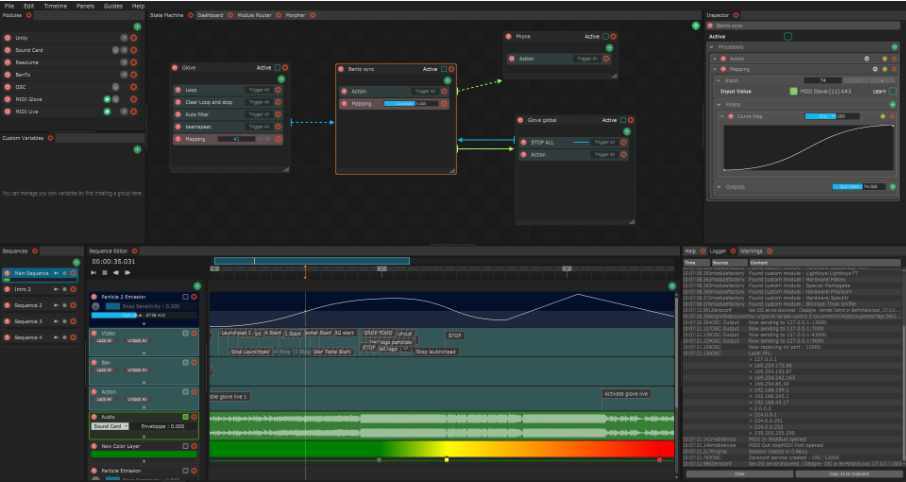
An intermedia sequencer
Sequence various kinds of media in an intelligent timeline:
- Playback most audio formats, with support for multichannel
- H.264 and HAP video playback, with a state-of-the art cross-platform video & shader pipeline
- Send & receive OSC, MIDI, DMX or directly talk through HTTP or a serial port
Advanced interaction facilities
A sequencer built for interactive shows:
- Trigger any part of the score upon external conditions or hardware controls
- Use conditions to create branching scores visually
- Control and get controlled through any external devices and protocols with a streamlined user interface
A scriptable, open software
Multiple programming languages are embedded in ossia score:
- Livecode with JavaScript directly in the score for advanced mappings, or create device mapping scripts
- Create blazing fast audio processors with Faust
- Extend any part of the software through the C++ API
- Write simple math expressions for quick control
Mixed modular & timeline workflow
Connect processes in a modular way directly from its timeline:
- Switch between timeline and nodal view at any point to edit processes more precisely
- Create state-machine-like scores for atemporal scenarios
- Nest and group without depth limit
Supported protocols
- These protocols are implemented behind a common interface in libossia
- Any app using libossia can thus benefit from their support, bridge them, etc. These protocols are available under a simple UI in ossia score: OSC, OSCQuery, MIDI, DMX, Sacn, Ardruino, HTTP, Websocket, Phidgets, Gamepad, Wiimote, Avid C|24.
Compatible environments
You can use your favorite creative coding language with ossia:
MadMapper, Module8, Millumin, Max, PureData, OpenFrameworks, Processing, VDMX, VVVV, Faust, Unity, Unreal, glslViewer, Open CV.
- Either through traditional OSC connection
- Or through the more advanced OSCQuery protocol
- Or through direct integration of libossia
Download:
OSSIA Score
TWO - Media Control Workstation.
TWO is what’s best described as a Media Control Workstation.
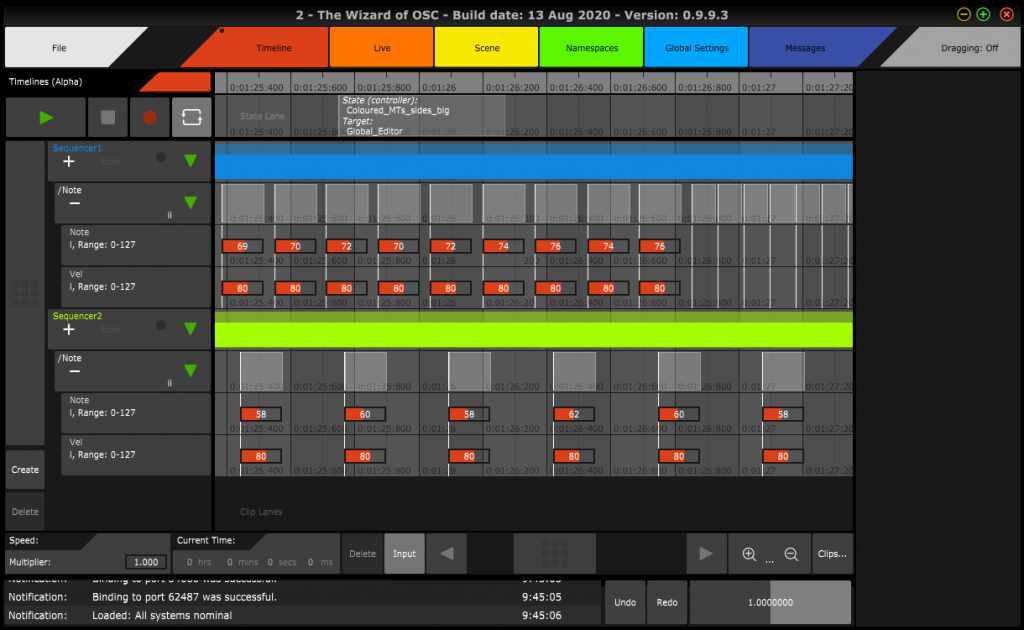
It enables the interactive combination of digital media control signals (currently OSC & MIDI) from several simultaneous sources – be it live signals, recorded and key-framed sequences, or your own live changes using on-screen controls.
You may already be using sequencer applications to record, play back, and interpolate. Control apps to build GUI’s for sending signals. Or data-flow / patching programs to map signals from sources to destinations.
TWO does the above, and uniquely, it integrates all into one coherent whole, so the tools can interrelate instead of each standing alone, oblivious of the existence of the other.
Crucially, TWO is a user-friendly GUI Application, not a programming environment.
Download TWO:
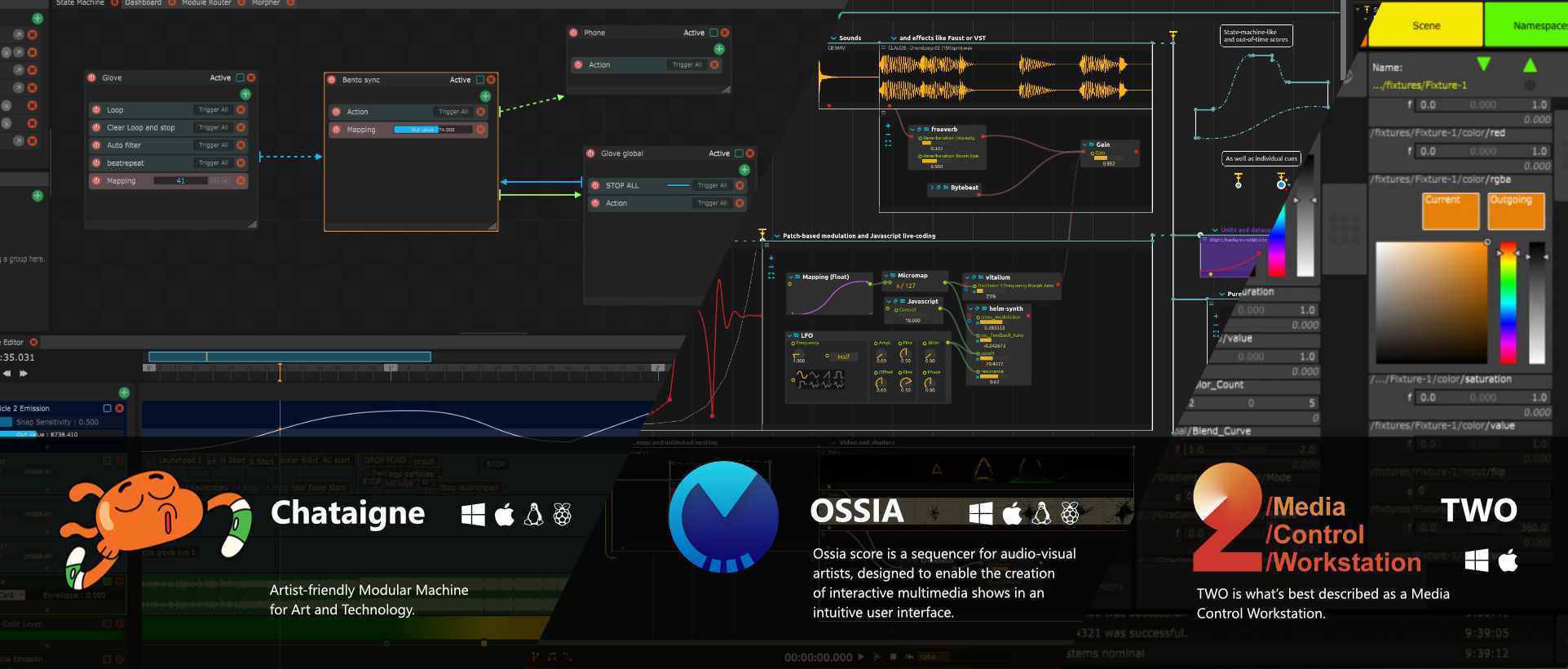
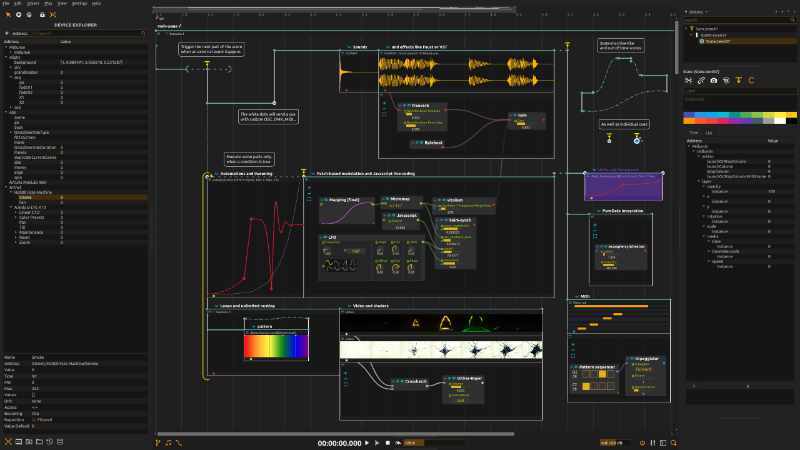
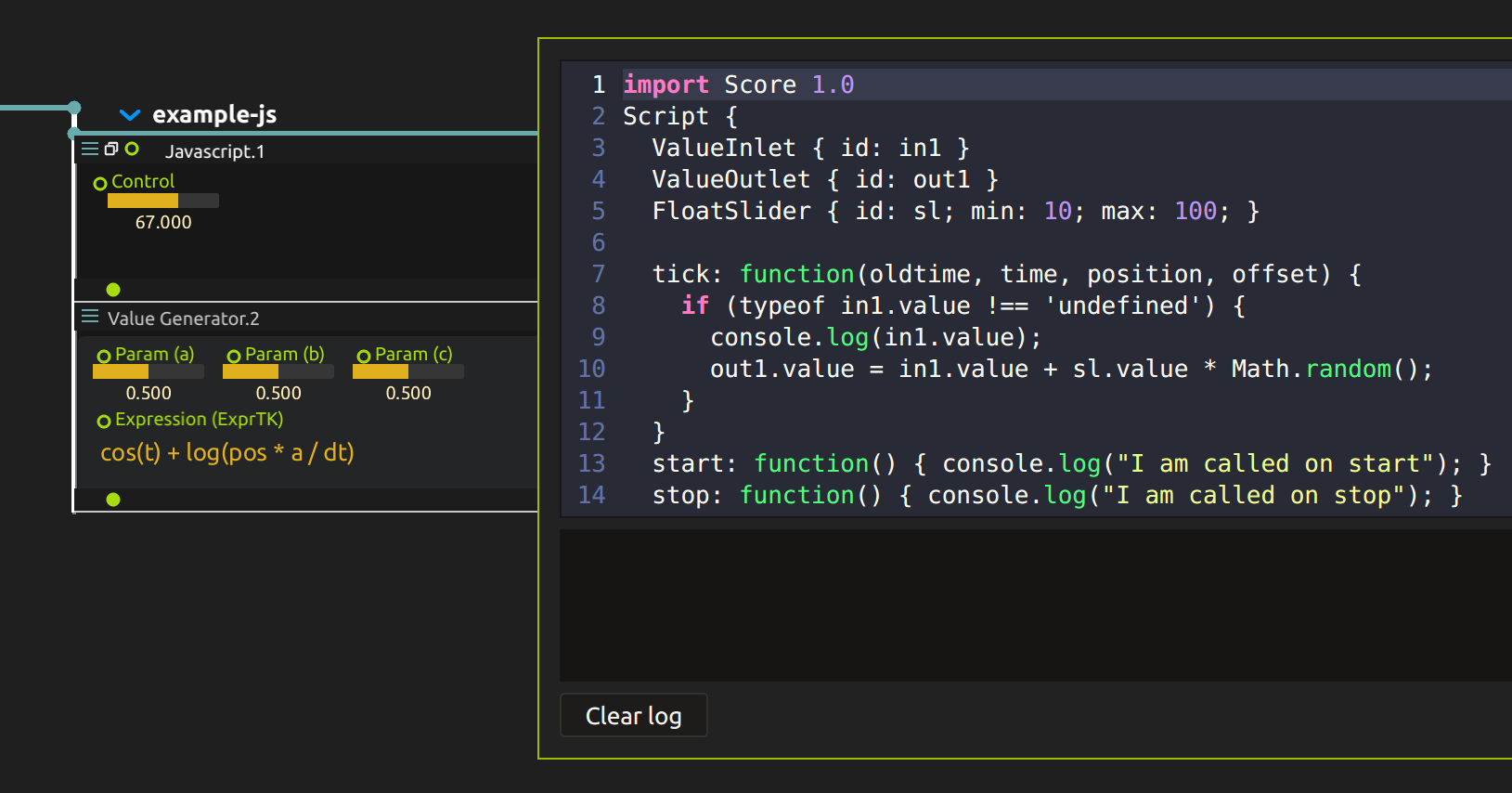

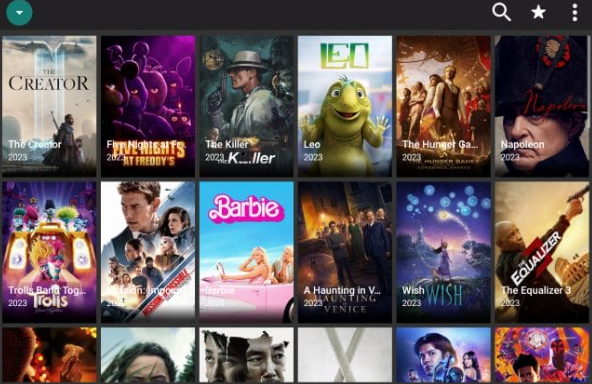
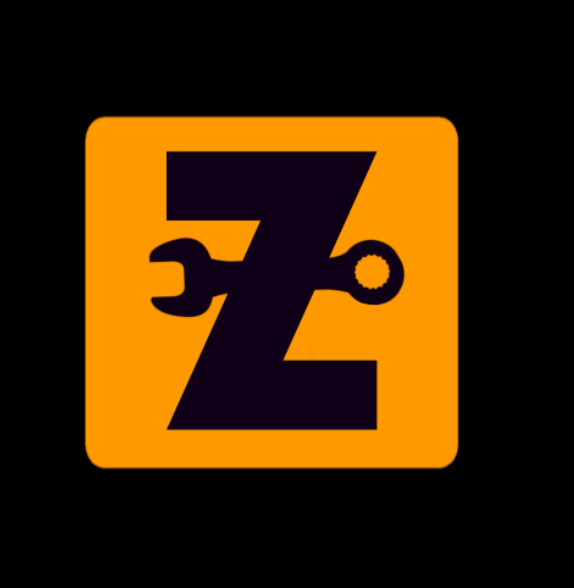
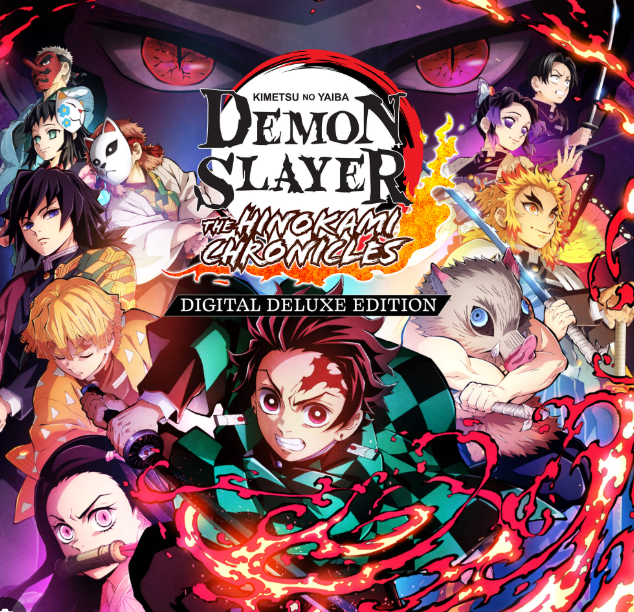

Discussion (3)
You seem to have the Chataigne/OSSIA screenshots mixed up.
ive fixed it up.. but at least you starting to reply :)
ossia.io/posts/distributed/
Collaborative features in score 3.0.11